The Old Stone House Museum in Brownington, Vermont | Where Legend Wraps Itself around History
It’s startling—you see it and think: What the heck is that? On a back road in Brownington, Vermont, a five story granite building looms all by itself on a plateau. It’s not a barn, it’s not a mansion—though it is an ample enclosure of space. And there’s nothing else like it around for miles. The […]

Coffee By Design | Portland, Maine
Photo Credit : Katherine Keenan
Photo Credit : Julia Shipley
It’s startling—you see it and think: What the heck is that? On a back road in Brownington, Vermont, a five story granite building looms all by itself on a plateau.
It’s not a barn, it’s not a mansion—though it is an ample enclosure of space. And there’s nothing else like it around for miles. The story behind the structure is equally captivating: legend has it Alexander Twilight, an African American schoolmaster built this dormitory, Athenian Hall, for his students all by himself, using an ox to drag the granite slabs, by way of an ever- growing immense earthen mound, up to the top floor. Then, after the final block and roof rafter had been set in place, when the hauling work was over, rather than lead the ox back to earth, it was slaughtered.
Recently I stopped by the Old Stone House, which is also the home of the Orleans County Historical Society, to ask the Director, Peggy Day Gibson, “Really?”
In her farmhouse office, across the road from the imposing dwelling, she said, “What I admire is that he did it. He wanted to build it. He didn’t commission a study, he just got to work. But I don’t think he did it alone,” Peggy, said “Yeah, there’s no way did that by himself.”
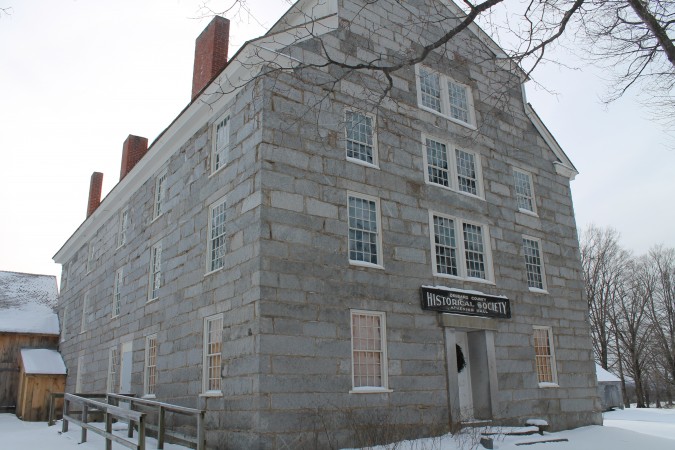
Photo Credit : Julia Shipley
Most of the granite blocks probably came from an outcrop on a farm a quarter mile away. There were three granite quarries within eight miles of here during the 1830’s when Reverend Twilight was harnessing his ox.
Peggy doesn’t buy the earthen ramp story either, “Otherwise—where is all the dirt? Logically, we would have found it somewhere. I think they used block and tackle—a pulley system, and then used inclined planes made with wide planks from the huge trees that were being cut back then.”
But she believes the part about the ox.
“If you know any thing about cows, you know that it’s fairly easy to lead them up a ramp into a trailer, but getting them back out? They don’t want to go.” Her suspicion is that Twilight couldn’t get the ox back down, voluntarily. “In those days, you would eat the ox eventually anyway,” she said.
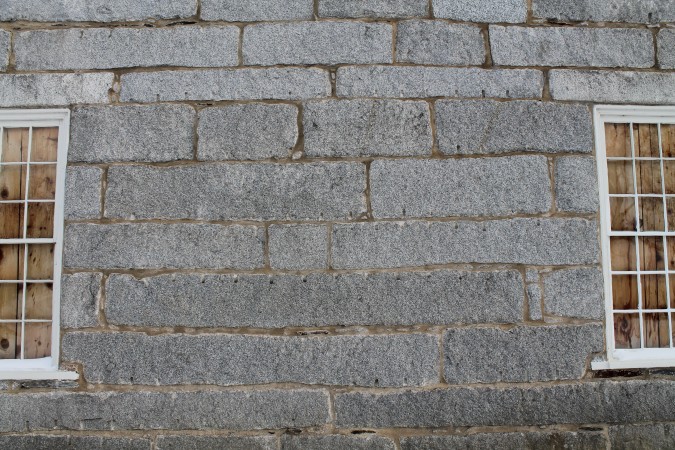
Photo Credit : Julia Shipley
A few summers ago, a visitor came up from Alabama. She was a descendant of the sister of Mercy Ladd Merrill Twilight, the Reverend Schoolmaster’s wife. She’d grown up entirely in the South and had been anticipating her visit north, to the Old Stone House, for some time. Peggy realized this relative was privy to an entirely separate set of stories, isolated from the local lore about Athenian Hall—so what had she been told by her forbears? What did she know?
She hadn’t heard about the earthen ramp. She didn’t know that Rev. Twilight was African American. But yes, she had heard, how after all the blocks were all brought up, they slaughtered the ox at the top.
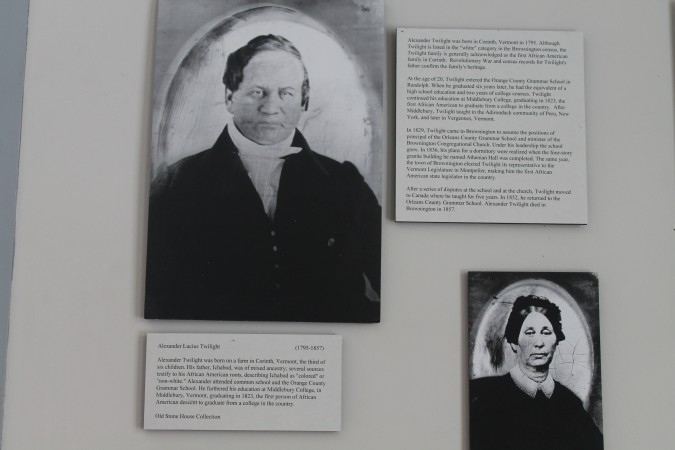
Photo Credit : Julia Shipley
And what about the elegant architecture? Why is this handsome edifice so unlike the nearby clapboard farmhouses. Peggy’s bet is that Alexander Twilight, who was born on a farm in Corinth, Vt and graduated from Middlebury College in 1823, was emulating the stone architecture of his alma mater.
And here it stands—solid as a rock, literally.
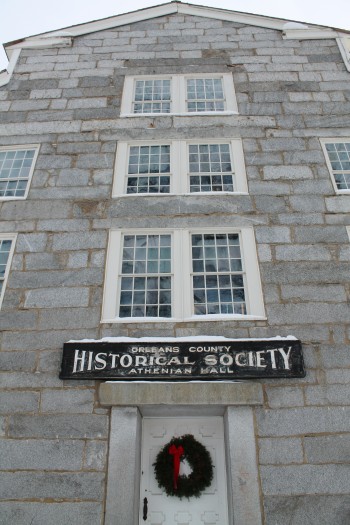
The wind was in a hurry, rushing across the plateau, past the huge silent former dormitory. The immaculate, trackless snow added to the spookiness.
Two summers ago, the Old Stone House erected a post and beam barn behind Athenian Hall, and the blond timbers contrast against the dark stone blocks. It seems apt: the wood, the granite; the work of the past schoolmaster, the work of the present Director; the known and the unknown—all persisting season upon season, together.
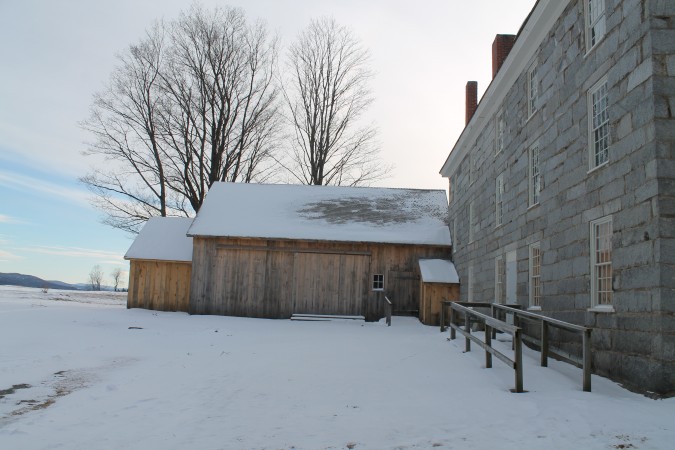
Photo Credit : Julia Shipley








What a lovely and fascinating piece. Thankyou!
Thank you, Karen!
And though the Old Stone House won’t be offering guided tours again till May, they are hosting/ sponsoring all kinds of cool events throughout the winter including The Collector’s Fair–it’s like a gigantic adult “show and tell” in Orleans later this month.
I’m SURE they just erected scaffold and used block and tackle and Lewis Pins just like we would today and just like the Romans did 2000 years ago.
The Old Stone House Museum preserves the records of Orlean’s County’s past, but they also keep it’s legacy alive through an impressive summer schedule of heritage skill workshops and events like 2012’s barn raising. Peggy Day Gibson and staff truly exemplify the spirit of Alexander Twilight and carry on his work educating and enriching the community. On Saturday, February 22 the Old Stone House will host blacksmithing demonstrations, indoor crafts and open their ski trails as part of an area-wide winter festival.